




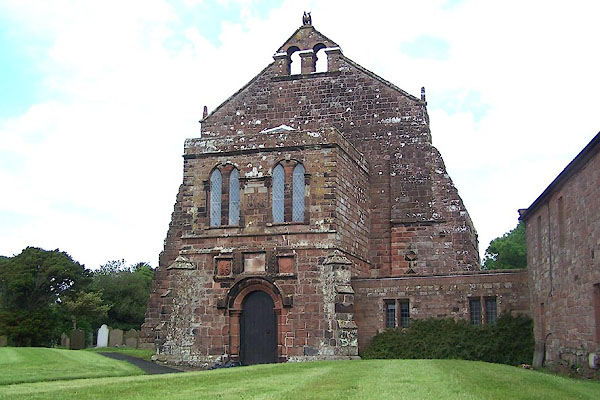
BNV91.jpg (taken 20.6.2007)
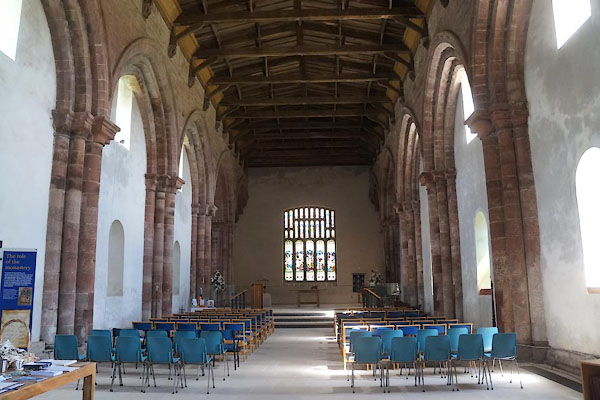
CFG45.jpg (taken 29.7.2016)
placename:- Holme Coltram
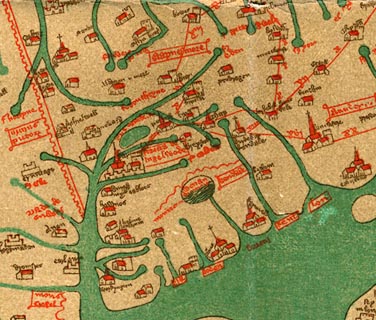 click to enlarge
click to enlargeGgh1Cm.jpg
item:- JandMN : 33
Image © see bottom of page
placename:- Holme Coltram
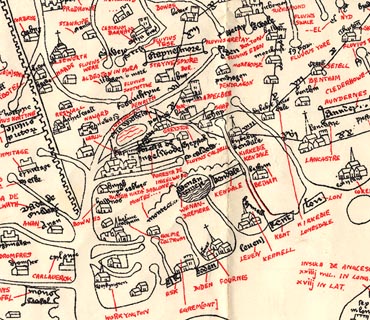 click to enlarge
click to enlargeGgh2Cm.jpg
item:- JandMN : 34
Image © see bottom of page
placename:- Holme
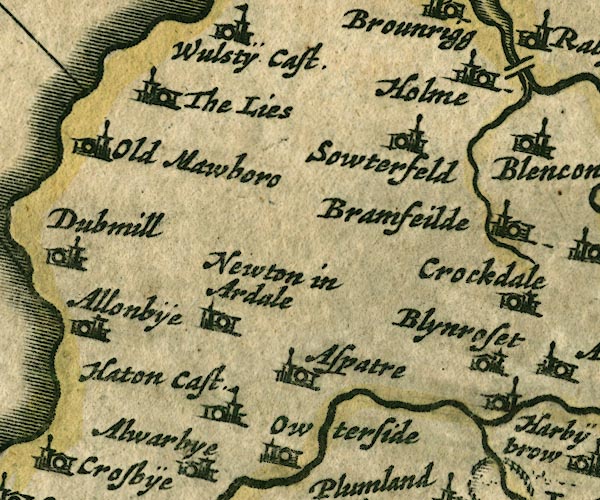
JAN3NY14.jpg
"Holme"
Buildings and tower.
item:- JandMN : 88
Image © see bottom of page
placename:- Holm Cultrum
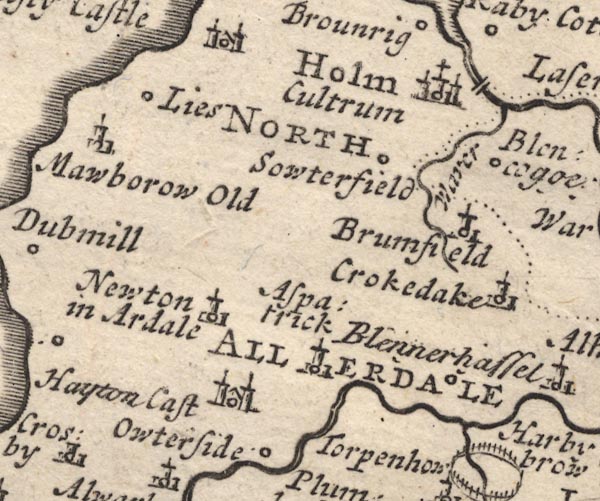
MD12NY14.jpg
"Holm Cultrum"
Circle, buildings, towers, with a cross; the first word upright, the second italic.
item:- JandMN : 90
Image © see bottom of page
placename:- Holme Cultram Abby
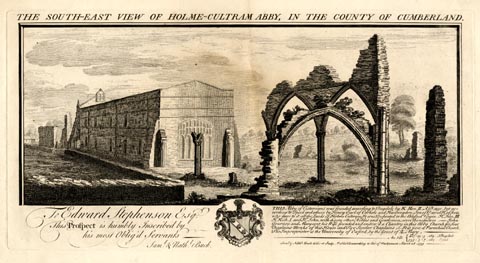 click to enlarge
click to enlargeBU0208.jpg
printed, top "THE SOUTH-EAST VIEW OF HOLME-CULTRAM ABBY, IN THE COUNTY OF CUMBERLAND."
printed, bottom "THIS Abby of Cistercians was founded according to Dugdale by K. Hen. II. A.D.1150, but according to Speed and others by Henry Earl of Carlisle and Huntingdon, Son of David K. of Scots, who gave to it all the Lands of Holme Cultram. It was Dedicated to the Blessed Virgin. K. Hen. III. K. Rich. I. and K. John, with divers other Nobles and Gentlemen, were Benefactors. - John Gournon and Margaret his Wife founded and endow'd a Chantry in this Abby Church for four Chaplains Monks of this House and Two Secular Chaplains. - It is now a Parochial Church. The Impropriator is the University of Oxford, by the Grant of Q. Mary. An. Val. ~427: 19: 3 obq. Dugdale ~535: 3: 7 obq. Speed / Saml. &Nathl. Buck delin: et Sculp. Publish'd according to Act of Parliamt. March 26. 1739."
item:- Armitt Library : 1959.67.8
Image © see bottom of page
placename:- Holm Abbey
 goto source
goto sourceGentleman's Magazine 1748 p.291
 click to enlarge
click to enlargeG748E04.jpg
"... On the south side of the bay [Moricambe] lies Holm-abbey, eminent for the residence of the princes of Scotland; ..."
placename:- Holme Abbey
placename:- Holme Cultrain Abbey
 goto source
goto sourcePage 172:- "..."
"... David I. king of Scotland founded Holme, or as it is commonly called Holme Cultrain abbey; and Vulstey castle was built by the abbots in the neighbourhood to secure their treasure, books, and records, from the sudden inroads of the Scots. ..."
placename:- Holme Cultrayne Abbay
 goto source
goto sourcePage 185:- "..."
""Holme Cultrayne abbay of white monkes," or Cistercians, founded by David, king of Scots, or his son Henry, valued at £.427." Though not a"
 goto source
goto sourcePage 186:- "mitred abbey the abbot had summons to parliament in the reigns of Edward I. and II. The steeple fell down Jan. 1. 1600, and beat down great part of the chancel, which was rebuilt 1603, and afterwards burnt down with the church except the vaulted south aisle. The chancel was rebuilt by the vicar Edward Mandeville, and the church repaired by the parishioners. The west porch was built by Robert Chambers, abbot t. Henry VII. and VIII. his rebus being on it, and his gravestone robbed of its brasses is shewn in the ruined choir. Only the nave now remains. ..."
"Michael Scot was a Durham man, who applied himself to the abstruse Aristotelian philosophy, which he pretended to translate from Avicenna, and dedicated to Frederic II. emperor of Germany, whose astrologer he was. Some of his philological and astrological works have been printed, and Dempster says some remained in his time in Scotland, which his countrymen would not dare to open for fear of the devilish pranks that might be played by them."
 goto source
goto source"..."
"ABBEY-HOLM, or HOLM-CULTRAM, ... had a stately abbey, founded by David I. king of Scotland, who resided chiefly in Cumberland. The church is dedicated to St. Mary, and is a vicarage, value, 6l. 13s. 4d. Patron, the University of Oxford. ..."
"..."
 goto source
goto sourceGentleman's Magazine 1819 part 1 p.405
From the Compendium of County History:- "1216. Holme Cultram abbey pillaged, and Carlisle, Aug. 8, taken by Alexander King of Scotland."
"..."
"1300. At Holme Cultram abbey, in October, Edward I. released the Bp. of Glasgow from his imprisonment, and received his allegiance with great solemnity."
 goto source
goto sourceGentleman's Magazine 1819 part 1 p.505 "1322. ... and Holme Cultram abbey, where his father was buried, destroyed by Robert Bruce King of Scotland, who devastated the Western side of this county to Duddon sands."
"..."
"1383. Holm Cultram abbey saved from burning by the Abbot paying the sum of 200l. to the Earl of Douglas, commander of the Scots."
 goto source
goto sourceGentleman's Magazine 1816 part 2 p.601
Biographical note from the Compendium of County History:- "'The wizard Michael Scot' was a monk of Holme Cultram about 1290. ..."
 goto source
goto source"... Even the religious enthusiasm of monachism scarcely advanced within the shadow of the mountains, much less penetrated into their secluded dales. Furness, Calder, St. Bees, and Holme Cultram abbeys, are all in the open country. For a long period, indeed, the population must either have been extremely small, or their religious interests neglect-"
 goto source
goto sourcePage xi:- "[neglect]ed; perhaps both might be the case. ..."
placename:- St Mary's Church
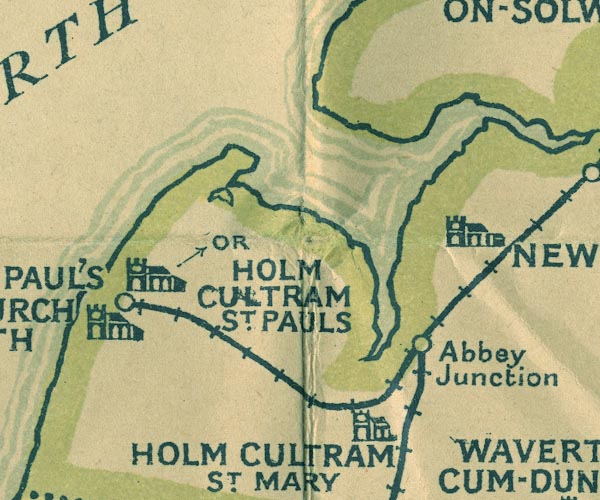
NUR1NY15.jpg
"HOLM CULTRAM ST. MARY"
item:- JandMN : 27
Image © see bottom of page
 notes about bells
notes about bells stained glass
stained glassplacename:- Church of St Mary
courtesy of English Heritage
"CHURCH OF ST MARY / / / HOLME ABBEY / ALLERDALE / CUMBRIA / I / 71961 / NY1771650814"
courtesy of English Heritage
"Cistercian Abbey now Parish Church. Founded 1150 with early C16 addition and alterations dated 1730; 1884-5 vestry and 1913 restoration; 1973 ambulatory. Large blocks of red sandstone (brought across the Solway from Scotland). Graduated greenslate roof, Welsh slate on patch and vestry. West porch and ambulatory extension; 6-bay nave/chancel, formerly the nave of the Abbey Church (originally of 9 bays) with aisles removed; west twin bellcote and north vestry/organ chamber. 2-storey porch has round arch with Latin inscription to Robert Chambers, Abbot 1507 and his coat of arms. Upper floor rebuilt to form vestry, dated 1730 with Latin inscription. 2-light lancet windows flank inscription. Flanking statue recesses of 1507 appearance; the right one has door giving access to small chamber. Ambulatory to right, linking with adjoining library and shop, has lead-paned windows in chamfered surrounds. Side walls of nave of 1730 have round-headed casement windows with glazing bars on 2 levels. West wall projects at either side and has been stepped to give the appearance of buttresses. Perpendicular east window c1604, moved to its present location in 1730, flanked by former nave aisle columns. Interior of porch and ambulatory have graveslabs to various abbots and members of the Chambers family of Raby Cote. Heavily moulded west portal with 4 orders of shaft columns and enriched waterleaf capitals. Interior: arcades have piers of clustered columns, with waterleaf capitals, and pointed arches now blocked to form north and south walls. Pre-reformation open timber roof moved to a lower level in c1604. Restoration dated MCMXIII on corbel. Norman gallery at west end now gives access to former vestry. Royal Arms of Queen Victoria. Free-standing bust of Joseph Saul by Joshua Anderson. Jacobean carved oak chair and 2 C15 or early C16 oak muniment chests. C20 furnishings and fittings. Late C19 and early C20 stained glass. After the Dissolution the Abbey was granted to Oxford University. See G.E. Gilbanks, Some Records of A Cistercian Abbey/Holme Cultram, Cumberlands, 1899; F. Grainger and W.G. Collingwood, The Register & Records of Holme Cultram, 1929; Transactions Cumberland & Westmorland Antiquarian &Archaenlogical Society, old series, i, p263; new series, vii, pp262-268; xiii, pp244-251."
courtesy of English Heritage
"CHURCHYARD WALL SOUTH OF CHURCH OF ST MARY / / / HOLME ABBEY / ALLERDALE / CUMBRIA / II / 71962 / NY1772150807"
courtesy of English Heritage
"Churchyard wall. C20 on medieval plinth. Squared blocks of red sandstone. Low wall, unfinished, built on the site of the south aisle wall of the former Abbey of Holme Cultram, incorporating the excavated foundations of the cloister entrance. West end incorporates plinth of south-west angle of nave."
courtesy of English Heritage
"ABBEY SHOP / / / HOLME ABBEY / ALLERDALE / CUMBRIA / II / 71963 / NY1769250799"
placename:- Holm Cultram Abbey
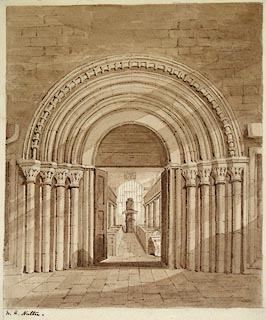 click to enlarge
click to enlargePR1088.jpg
View into the abbey interior through the double west door, the doorway of which is framed by a substantial round headed arch supported by eight columns.
signed at bottom left:- "W.H. Nutter"
annotated at bottom centre:- "Holm Cultram Abbey - West door"
item:- Tullie House Museum : 1970.80.15
Image © Tullie House Museum
placename:- Holme Cultram Abby
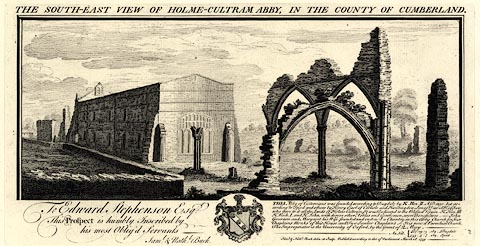 click to enlarge
click to enlargeBU0117.jpg
With descriptive text of 1837.
No.17 in The Castles, Abbeys, and Priories of the County of Cumberland, 1877.
printed at top:- "THE SOUTH-EAST VIEW OF HOLME-CULTRAM ABBY, IN THE COUNTY OF CUMBERLAND."
printed at lower left:- "To Edawrd Stephenson Esqr: This Prospect is humbly Inscribed by his most Oblig'd Servants Saml: &Nathl: Buck."
printed at lower right:- "THIS Abby of Cistercians was founded according to Dugdale by K. Hen. II. AD 1150, but according to Speed and others by Henry Earl of Carlisle and Huntingdon, Son of David K. of Scots, who gave it all the Lands of Holme Cultram. It was dedicated to the Blessed Virgin. K. Hen. III K. Rich. I. and K. John, with divers other Nobles and Gentlemen, were Benefactors. John Gournon and Margaret his Wife founded and endow'd a Chantry in this Abby Church for four Chaplains Monks of this House and Two secular Chaplains. It is now a Parochial Church. The Impropriator is the University of Oxford, by the Grant of Q. Mary. An. Val. L427: 19s: 3d. Dugdale. L535: 3s: 7d. Speed. Saml. &Nathl. Buck delin: et sculp: Publish'd according to Act of Parliament March 26. 1739."
item:- JandMN : 178.17
Image © see bottom of page
 cross slab grave covers
cross slab grave covers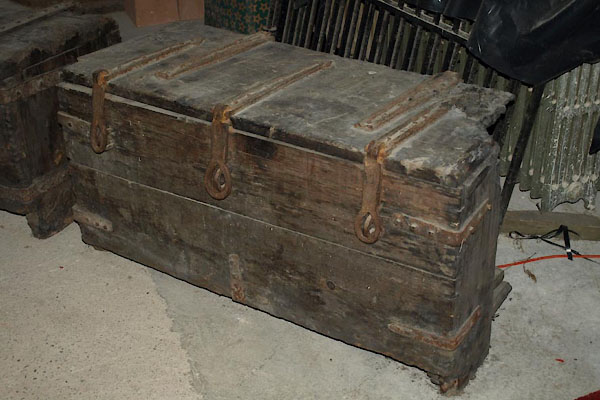
BVI77.jpg Chest (1)
(taken 20.6.2007)
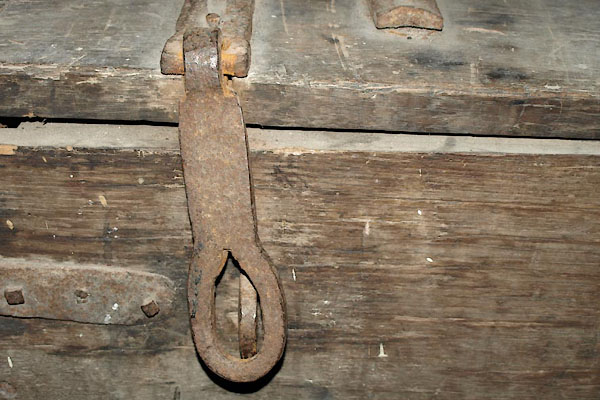
BVI78.jpg Chest (1)
(taken 20.6.2007)
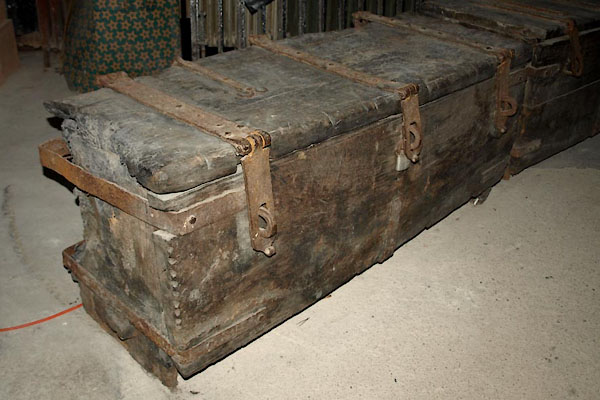
BVI79.jpg Chest (2)
(taken 20.6.2007)
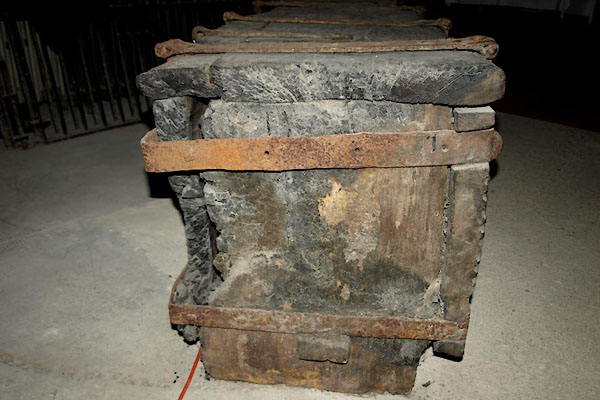
BVI81.jpg Chest (2)
(taken 20.6.2007)
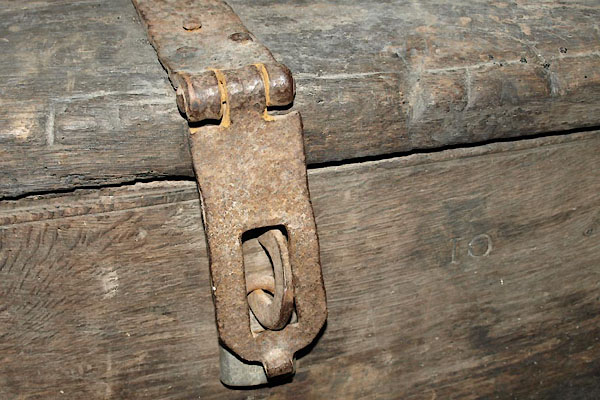
BVI80.jpg Chest (2)
(taken 20.6.2007)
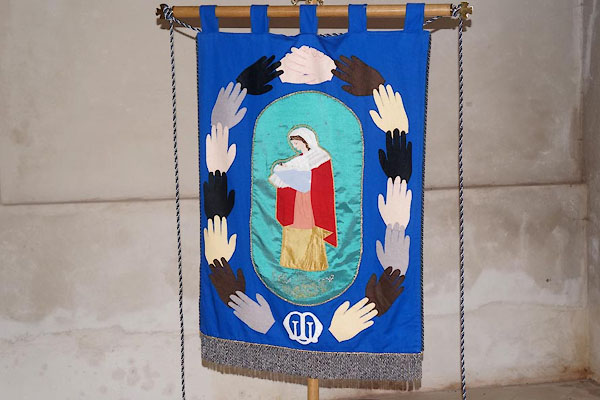
CFG57.jpg Mothers Union banner.
(taken 29.7.2016)
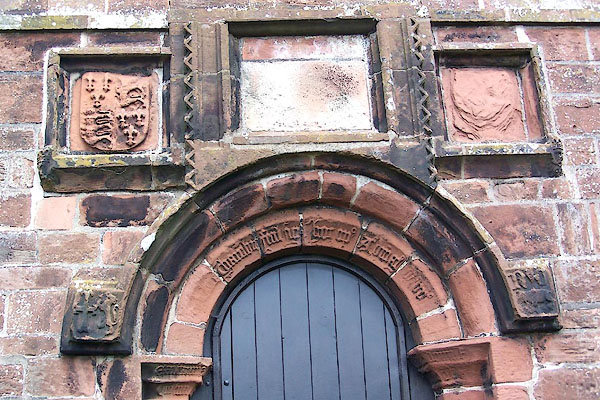
BNV92.jpg West end door; rebuilt by Abbot Chamber, 1507.
(taken 20.6.2007)
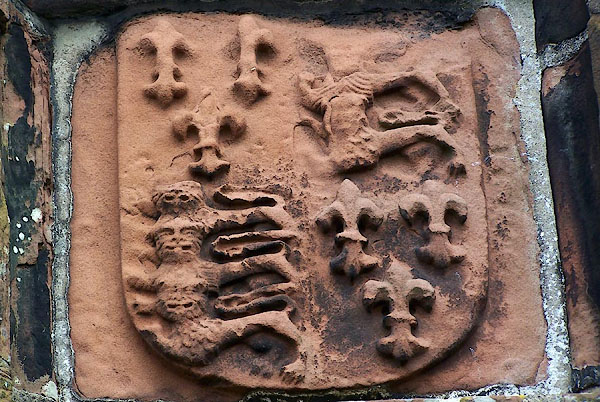
BNV93.jpg Royal coat of arms, as used by Henry IV onwards; on porch door.
(taken 20.6.2007)
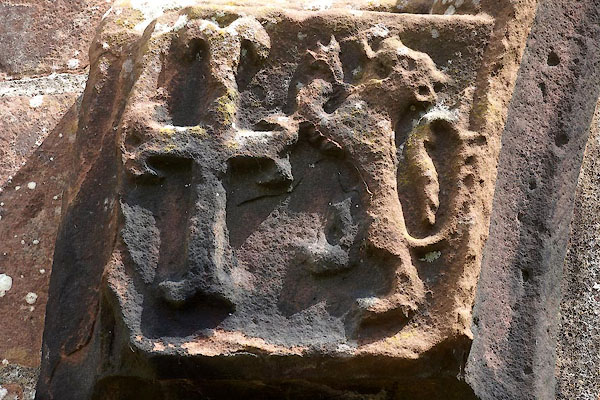
CFG41.jpg Carving on porch door.
(taken 29.7.2016)
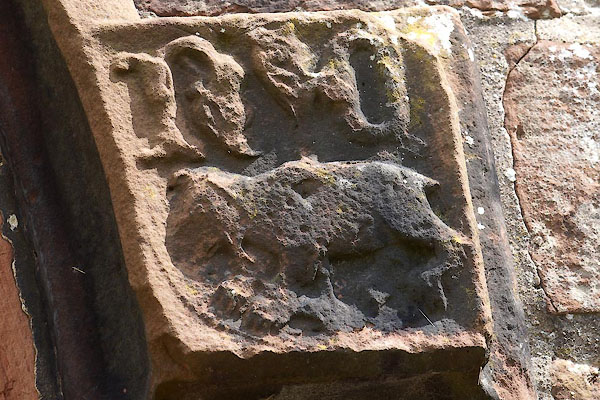
CFG42.jpg Carving on porch door.
(taken 29.7.2016)
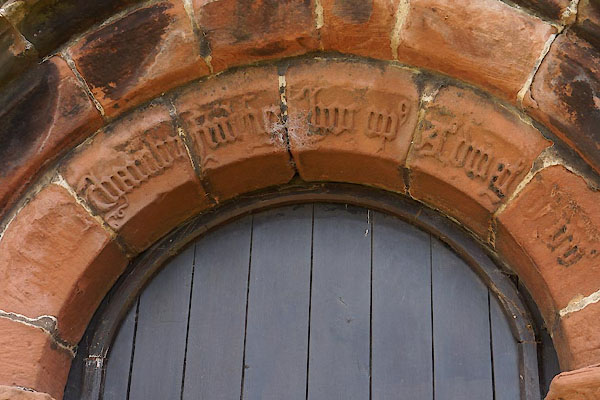
CFG43.jpg Carving on porch door.
(taken 29.7.2016)
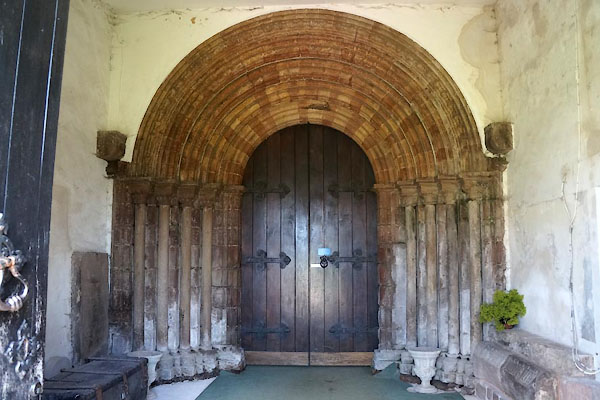
CFG44.jpg West door of church.
(taken 29.7.2016)
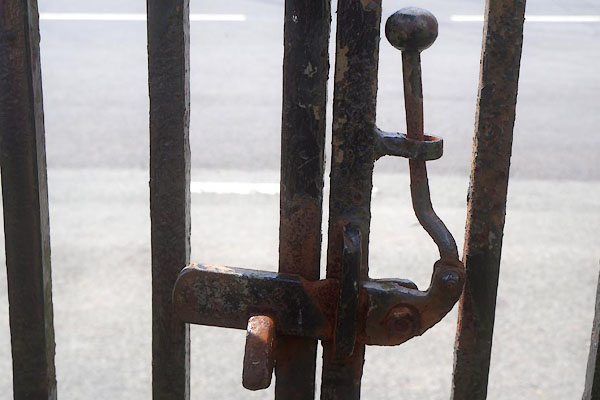
CFG40.jpg Gate catch.
(taken 29.7.2016)
